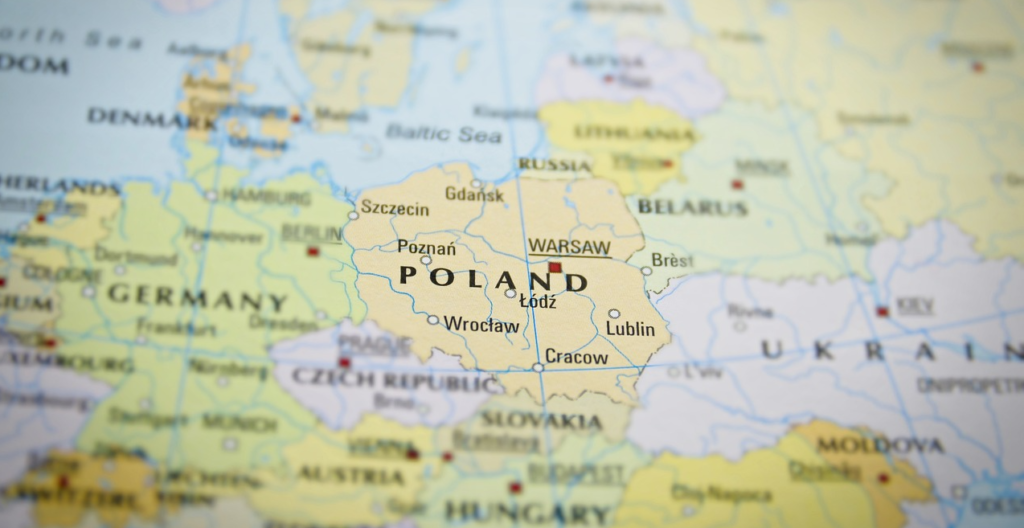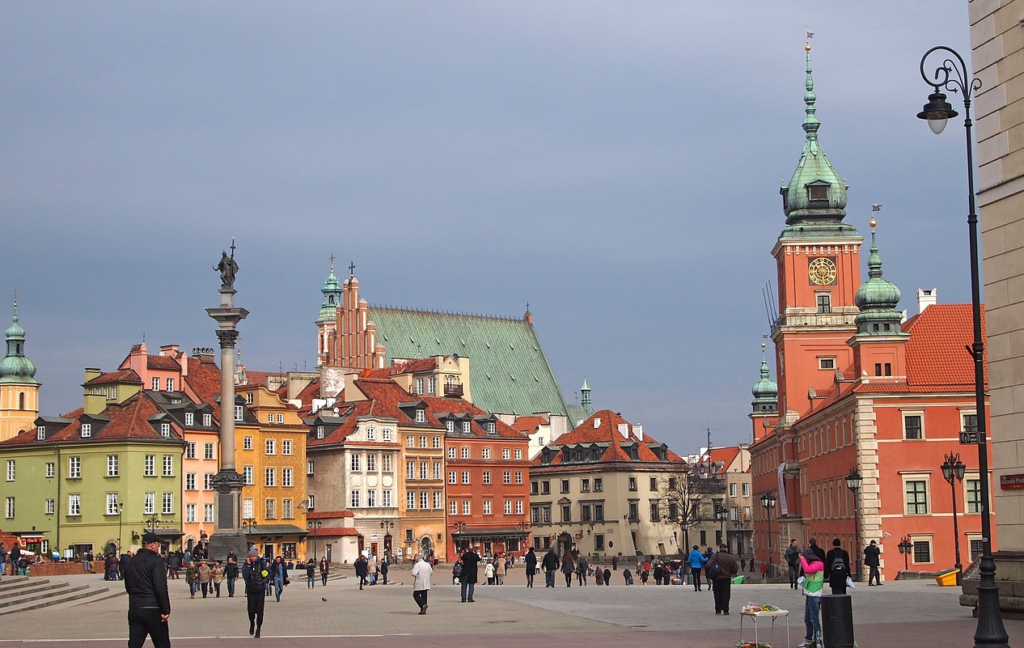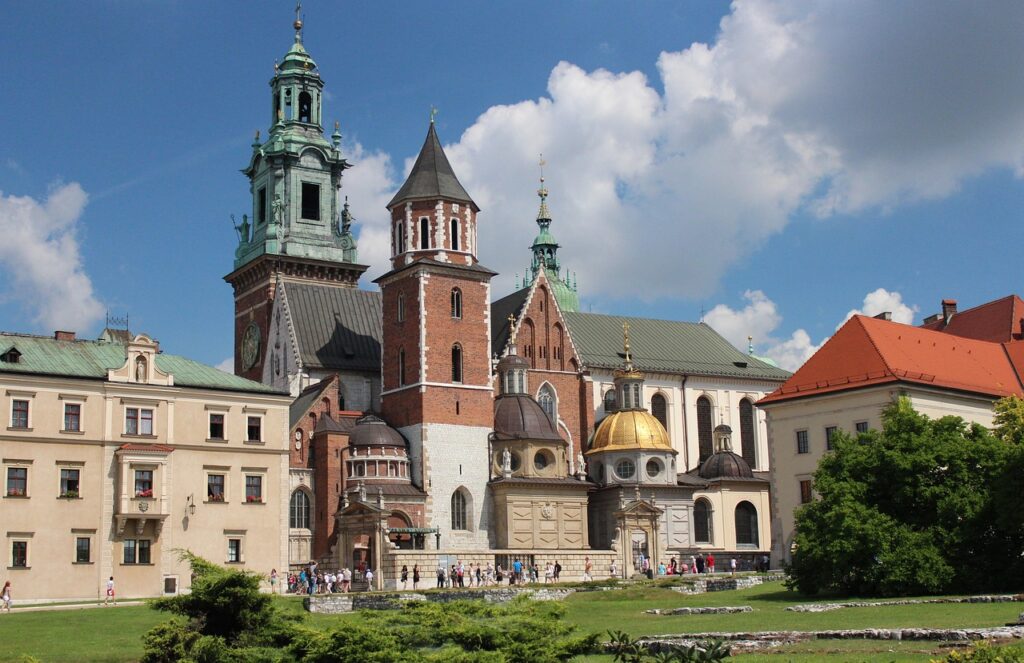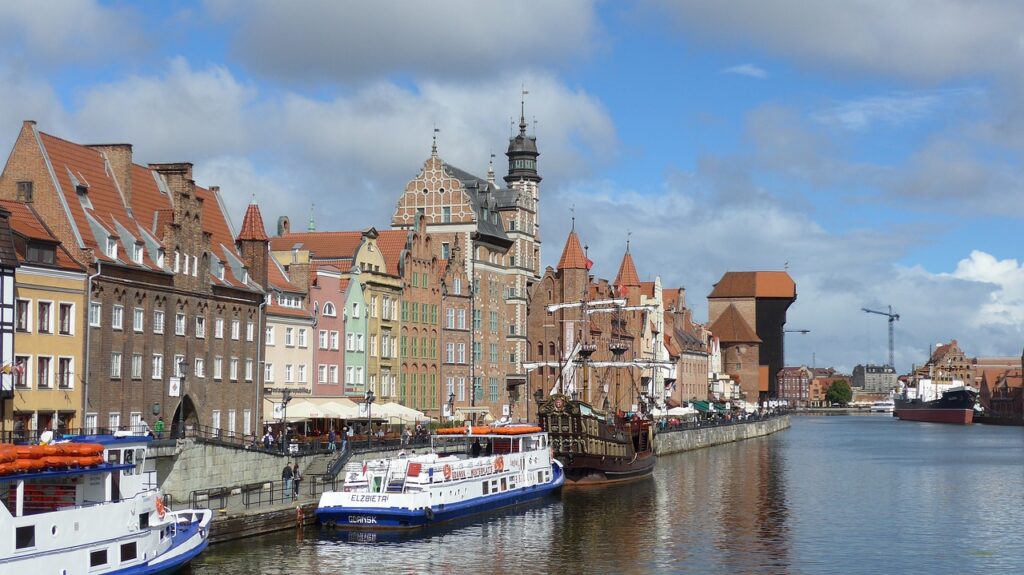
On any vacation, you will need to pay for food, accommodation, and transport. But, when it comes to activities, you may be able to save some money. Lots of museums and art galleries have a “free admission day” once a week, and some tourist sites are complimentary all the time. We have chosen three popular cities in Poland to show how (with a little scheduling), budget-conscious travelers can go sightseeing for free. By planning your trip carefully, you could enjoy a week in Warsaw, Kraków, or Gdańsk with minimal spending.

Warsaw
Monday:
Housed in the former Warszawa Główna railway station, these exhibits celebrate Poland’s railway history. You will find an impressive outdoor collection of historic locomotives and train cars, along with interior displays of railway uniforms, signage, tickets, and communication systems.
Tuesday:
One of Poland’s largest and most important museums, it houses an extensive collection of fine art, including Polish painting, decorative arts, numismatics, and antiquities. Highlights include works by Jan Matejko and ancient Egyptian artifacts.
Wednesday:
The Royal Castle was painstakingly reconstructed after WWII. Once home to Polish monarchs, it now serves as a museum showcasing opulent 18th-century interiors, royal portraits, and historical documents.
Thursday:
Museum of King Jan III’s Palace in Wilanów
This baroque royal residence, often called “the Polish Versailles,” is a beautifully preserved example of 17th-century architecture and gardens. The palace contains royal portraits, furniture, tapestries, and other remnants of the Polish-Lithuanian Commonwealth.
Friday:
One of Warsaw’s newest museums, it presents the story of Poland through interactive exhibits, multimedia installations, and carefully curated historical artifacts. Themes include the country’s struggles for independence, democracy, and identity across centuries.
Saturday:
Run by the National Bank of Poland, this modern, interactive museum explores the history of money, banking, and economics. You can see rare coins, banknotes, and a real gold bar, as well as virtual exhibits on inflation, monetary policy, and central banking.
Sunday:
Run by the Polish Geological Institute, this museum offers an in-depth look at Earth’s natural history. Its exhibitions include dazzling mineral collections, fossils, and reconstructions of prehistoric creatures. A must-see, is a life-sized model of a woolly mammoth.

Kraków
Monday:
This former residence of Polish kings ranges in architectural style from Medieval to Renaissance. The castle complex includes exhibits such as the State Rooms, Royal Private Apartments, and the Crown Treasury and Armory. On Mondays between 10:00 AM and 4:00 PM, many of them are free to enter.
Tuesday:
The Princes Czartoryski Museum
This museum, founded by Princess Izabela Czartoryska, contains some of Poland’s most valuable art. Its collection includes European paintings, decorative arts, and ancient artifacts. However, you cannot miss Leonardo da Vinci’s renowned piece Lady with an Ermine. On Tuesdays, the museum offers free entry to all permanent exhibitions.
Wednesday:
Rynek Główny & Cloth Hall
Rynek Główny is Europe’s largest medieval town square. Surrounded by historic buildings, you find a vibrant hub of activity with street performers, cafés, and seasonal markets. The Cloth Hall is a Renaissance-era market hall that used to be a center for international trade. The structure is fascinating architecturally, and it is a great place to buy souvenirs from your trip.
Thursday:
MOCAK Museum of Contemporary Art in Kraków
MOCAK showcases works by modern Polish and international artists. The museum aims to present contemporary art in a way that is accessible and engaging, often addressing social and political issues through its exhibitions. Entry to the MOCAK Collection exhibitions at Level -1 (the permanent collection) is free on Thursdays.
Friday:
If you have an interest in geology (or simply love jewelry), we recommend visiting the Amber Museum. You will learn about the formation process and the historical uses of these Baltic Sea jewels. The museum displays various amber specimens, including pieces with insects and water droplets trapped inside. At the on-site laboratory, you will have the opportunity to verify the authenticity of amber items using infrared spectroscopy.
Saturday:
One cannot visit Kraków without seeing the spectacular Wieliczka Salt Mine. By traveling 300 meters underground, you can explore a labyrinth of chambers, chapels, and sculptures—all carved entirely from salt. Unfortunately, admission to the mine is never free. However, when choosing a day to visit, consider Saturday, when at least the Saltworks Museum (adjacent to the mine) is free. Its exhibits include geological specimens, mining equipment, and old photographs/maps of the mine.
Sunday:
Krakus Mound
This 16-meter-high, 60-meter-diameter hill is believed to be Kraków’s oldest structure. Many think it is the burial site of the legendary King Krakus (the city’s founder). If you climb the mound, you can enjoy panoramic views of the city and the Vistula River.

Gdańsk
Monday:
In Gdansk (or Danzig in German), you will find one of the most beautiful Renaissance halls in Northern Europe. Visitors can explore historical exhibits detailing Gdańsk’s rich past and, in the summer, appreciate the panoramic city views from its tower. Highlights include the “Red Room,” designed by Dutch architect Hans Vredeman de Vries, the spiral staircase, and the sundial.
Tuesday:
Museum of the Second World War
Housed in a striking piece of modern architecture is a museum that provides a comprehensive chronological exploration of Poland’s fate during World War II. Its 5000 sq meters of exhibit space feature personal artifacts, multimedia presentations, and immersive installations that provide insight into the war’s impact on individuals and nations.
Wednesday:
National Maritime Museum in Gdansk
Situated on Ołowianka Island, the National Maritime Museum showcases Poland’s rich maritime history. You can pursue ship models, maritime artifacts, and interactive displays that highlight the country’s naval heritage and shipbuilding traditions. Admission to the permanent exhibition is free on Wednesdays.
Thursday:
Długi Targ Square & St. Mary’s Church
Długi Targ (Long Market) is the main square of Gdańsk’s Old Town. As you stroll along the square, you will see colorful facades and historic landmarks such as the Neptune Fountain, Artus Court, and the Golden House. Stop in to admire the gothic architecture and intricate interiors of St. Mary’s Church — one of the largest brick churches in the world.
Friday:
Located in a former Franciscan monastery, The National Museum houses art and artifacts spanning various periods and styles. You will find paintings, sculptures, ceramics, jewelry, and more. Its most well-known piece is the Last Judgment triptych by Hans Memling.
Saturday:
Westerplatte
Just outside the city center is the Westerplatte peninsula, the site of the first battle of World War II. You can explore the remains of military fortifications and view monuments dedicated to fallen Polish soldiers.
Sunday:
A branch of the Archaeological Museum, The Romanesque Cellar is the oldest interior preserved in Gdansk. It is a 13th-century cellar beneath a Dominican Monastery, which once served as a kitchen and dining area for the order. The main attraction is the refectory, with its (mostly) original walls and unique system of vaults.
Poland is not the only country where you can go sightseeing for free. If you enjoyed our piece, The Ultimate Museum Bucket List, you will be thrilled to learn that even world-famous institutions like the Louvre and Uffizi Gallery offer complimentary admission on specific days or times.